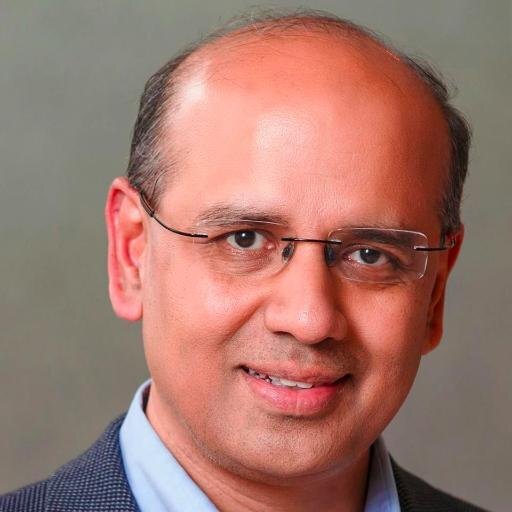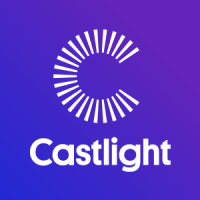Some people are super health conscious, with their days driven by early-morning trips to the gym and kale smoothies. Others try their very best to avoid thinking about anything health-related at all, pushing thoughts of vegetables or long walks right out of their minds. Regardless of which camp you fall in, your overall health is important and your medical history is critical data. So why is it so difficult to get access to important health information for ourselves and those we love? Is the onus on us? Or is it due to a breakdown within the system? Either way, we clearly need systems and technology that support our health. Vijay Anand is the EVP of Engineering at Castlight Health, and he believes that technology combined with the human touch can increase everyone’s health.
“What we actually do is a combination of things. [We] certainly help you with content that helps you understand, why is that important? And what is it? But it’s also about now using the power of high touch, right? This is essentially a key element of what our care guides do. On their single panel as they support our users, they actually have your whole health profile, but also the key recommendations and the gaps that you need to be closing.”
Healthcare can feel like the ocean. It’s huge, important, overwhelming at times, and its waves can crash down on a person if they’re not careful. There’s a sea of healthcare information out there. Without some assistance, no one person can gather it all, make sense of it, figure out a plan, and then act accordingly. Fortunately, we do have help. There is technology that can guide us through the data and help us figure out what to do. Well-intentioned people can be a great support too. The key is getting technology and humanity working together toward the common goal of individual and community health.
On this episode of IT Visionaries, Vijay explains the steps we can take to create a system that aggregates health data, personalizes it, and then helps engage people in making healthy decisions. He also shares how future innovation can help those who need services the most by identifying need and targeting care. Enjoy the episode!
Takeaways:
- Three Tech Steps Toward a Healthy System: The first step is aggregating data from a variety of sources concerning health providers and procedures. Secondly, users need the ability to have personalized health information that is driven by the data. The last step involves engaging users so that they can adjust their behaviors to act on information that supports their health.
- Commonality Between Taxes and Healthcare: Making technological advances for people is not only about taking something that is incredibly complex and making it more simple. People need confidence that they can actually do something in order to even give it a try. The need for confidence to complete one’s taxes is similar to the confidence required to care for one’s health, as it is in many other important endeavors. The human touch can help support people’s confidence and encourage their perseverance.
- Tech/Health Innovations: Targeting services to people who really need it is something to look forward to and be motivated to do. Information will hopefully become less siloed and more holistic. A.I. advances will target/personalize health even more and then drive healthy behavior changes.
For a more in-depth look at this episode, check out the article below.
Article
Some people are super health conscious, with their days driven by early-morning trips to the gym and kale smoothies. Others try their very best to avoid thinking about anything health-related at all, pushing thoughts of vegetables or long walks right out of their minds. Regardless of which camp you fall in, your overall health is important and your medical history is critical data. So why is it so difficult to get access to important health information for ourselves and those we love? Is the onus on us? Or is it due to a breakdown within the system? Either way, we clearly need systems and technology that support our health. Vijay Anand is the EVP of Engineering at Castlight Health, and he made the point that technology combined with the human touch can increase everyone’s health.
“What we actually do is a combination of things,” Anand said. “[We] certainly help you with content that helps you understand, why is that important? And what is it? But it’s also about now using the power of high touch, right? This is essentially a key element of what our care guides do. On their single panel as they support our users, they actually have your whole health profile, but also the key recommendations and the gaps that you need to be closing.”
Healthcare can feel like the ocean. It’s huge, important, overwhelming at times, and its waves can crash down on a person if they’re not careful. There’s a sea of healthcare information out there. Without some assistance, no one person can gather it all, make sense of it, figure out a plan, and then act accordingly. Fortunately, we do have help. There is technology that can guide us through the data and help us figure out what to do. Well-intentioned people can be a great support too. The key is getting technology and humanity working together toward the common goal of individual and community health.
On a recent episode of IT Visionaries, Anand explained the steps required to create a system that aggregates health data, personalizes it, and then helps engage people in making healthy decisions. He also shared how future innovation can help those who need services the most by identifying need and targeting care.
“It’s not just about those that are able to use my digital app and have access,” Anand said. “…An important area that I would love to focus our digital health investments on [is that] there are populations in this country that are in food deserts, in mental health deserts. They live in zip codes, particularly where quality, health care and access to resources is a challenge. And they may not have the same access that I have. One of the things that I’m excited about is integrating data sources specifically around the various attributes of social determinants. What are the programs that are available in the neighborhood?”
At the end of the day, our technology is informed by our humanity. Desiring to help people is the key.
“I’m personally motivated, and I worked on this back in my previous job, about making sure that healthcare actually works for everybody,” Anand said.
Castlight aggregates health data, personalizes it for each user, and then seeks to engage users to take actions that will foster better health. Perhaps the most important aspect is connecting with users to help them make those healthy choices.
“It’s all about making sure that we’re able to engage the users on what we call the right journeys for them, [the] right health journeys for them to drive behavior change,” Anand said.
A big part in engaging people is instilling confidence in them that they can work a certain process to their benefit. Too often, technological creators make the false assumption that the only issue they need to resolve is turning something that is very complex into something that is more simple. Although that certainly is helpful, people really need to believe that they can achieve something in order to give it a try. If people are willing to give something a go, then they are infinitely more likely to succeed compared to if they never tried at all. Anand explained how he learned the value in user confidence in his previous job working at Intuit.
“What we realized is it’s not simply about simplicity and complexity,” Anand said. “It’s about how do we build confidence so people know what they’re doing, they can actually do it and understand why some decisions are being made, and also understand that they have the backing.”
Through his experiences working in fintech and now in healthcare, Anand learned that the personal touch is extremely helpful to build user confidence. People need to feel supported to grow. Anand shared how the lessons he learned at Intuit were then applied to Castlight.
“We introduced TurboTax live over there, which was a human service backing our digital experience that got a lot of people starting to use digital for the first time and feeling confident I can do it because I know if I’m not sure, I’ve got at a press of a button somebody that can help me get it done,” Anand said. “We have the same thing here with care guides where anytime you’re dealing with a question or a health condition or a challenge, at the press of a button you can chat or talk to a care guide.”
Although healthcare data can feel like a vast, imposing ocean, with riptides everywhere, technology can help us sift through the data and use it to our advantage. Underneath all technological advances, however, is our humanity, and the human touch must also be used in healthcare to grow our confidence.
To hear more about how Anand and Castlight are using technology along with the human touch to support healthcare, check out the full episode of IT Visionaries!
To hear the entire discussion, tune into IT Visionaries here.





